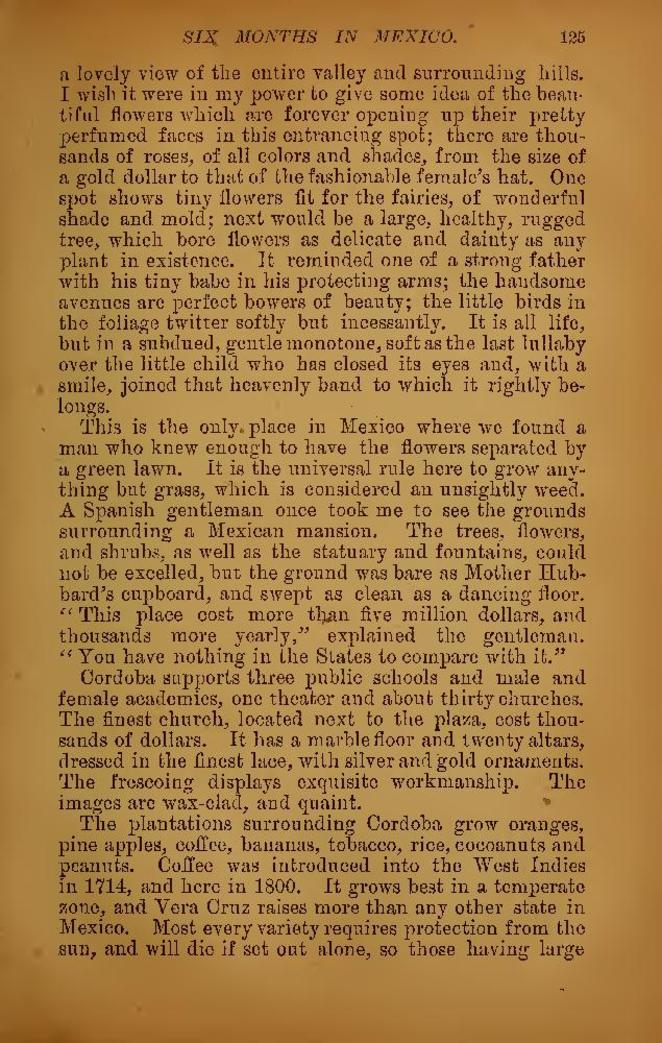a lovely view of the entire valley and surrounding hills. I wish it were in my power to give some idea of the beautiful flowers which are forever opening up their pretty perfumed faces in this entrancing spot; there are thousands of roses, of all colors and shades, from the size of a gold dollar to that of the fashionable female's hat. One spot shows tiny flowers fit for the fairies, of wonderful shade and mold; next would be a large, healthy, rugged tree, which bore flowers as delicate and dainty as any plant in existence. It reminded one of a strong father with his tiny babe in his protecting arms; the handsome avenues are perfect bowers of beauty; the little birds in the foliage twitter softly but incessantly. It is all life, but in a subdued, gentle monotone, soft as the last lullaby over the little child who has closed its eyes and, with a smile, joined that heavenly band to which it rightly belongs.
This is the only place in Mexico where we found a man who knew enough to have the flowers seperated by a green lawn. It is the universal rule here to grow anything but grass, which is considered an unsightly weed. A Spanish gentleman once took me to see the grounds surrounding a Mexican mansion. The trees, flowers, and shrubs, as well as the statuary and fountains, could not be excelled, but the ground was bare as Mother Hubbard's cupboard, and swept as clean as a dancing floor. "This place cost more than five million dollars, and thousands more yearly," explained the gentleman. "You have nothing in the States to compare with it."
Cordoba supports three public schools and male and female academies, one theater and about thirty churches. The finest church, located next to the plaza, cost thousands of dollars. It has a marble floor and twenty altars, dressed in the finest lace, with silver and gold ornaments. The frescoing displays exquisite workmanship. The images are wax-clad, and quaint.
The plantations surrounding Cordoba grow oranges, pine apples, coffee, bananas, tobacco, rice, cocoanuts and peanuts. Coffee was introduced into the West Indies in 1714, and here in 1800. It grows best in a temperate zone, and Vera Cruz raises more than any other state in Mexico. Most every variety requires protection from the sun, and will die if set out alone, so those having large
